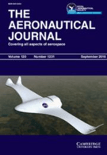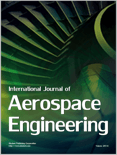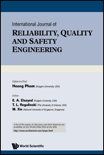
AERONAUTICAL JOURNAL
Scope & Guideline
Connecting scholars to the skies of knowledge.
Introduction
Aims and Scopes
- Aircraft Design and Performance:
Research focused on the design, optimization, and performance analysis of various types of aircraft, including UAVs, commercial jets, and military aircraft, utilizing advanced simulation and modeling techniques. - Aerodynamics and Fluid Dynamics:
Studies exploring the aerodynamic behavior of aircraft and components under various flow conditions, including transonic and hypersonic regimes, employing computational fluid dynamics (CFD) and experimental methods. - Propulsion Systems and Fuel Efficiency:
Investigations into the performance of different propulsion systems, including turbojets and hybrid-electric engines, as well as the impact of sustainable fuels on efficiency and emissions. - Control Systems and Automation:
Development of advanced control strategies for aircraft and UAVs, including fault-tolerant systems, adaptive control, and trajectory optimization, often incorporating machine learning techniques. - Environmental Impact and Sustainability:
Research addressing the environmental challenges associated with aviation, including emissions reduction, noise control, and the implementation of sustainable aviation fuels. - Safety and Reliability Engineering:
Studies aimed at enhancing the safety and reliability of aviation systems through risk assessment, failure analysis, and the development of robust safety management systems. - Human Factors and Pilot Performance:
Research examining human factors in aviation, including pilot decision-making, workload assessment, and the effects of automation on flight safety.
Trending and Emerging
- Sustainable Aviation Technologies:
Research into sustainable aviation fuels and technologies aimed at reducing the environmental impact of aviation is rapidly increasing, reflecting global priorities on climate change and sustainability. - Artificial Intelligence and Machine Learning Applications:
The application of AI and machine learning in various aspects of aeronautics, including predictive maintenance, flight path optimization, and autonomous systems, is becoming a prominent theme in recent studies. - Advanced Control Techniques for UAVs:
There is a noticeable trend toward developing sophisticated control strategies for unmanned aerial vehicles (UAVs), including reinforcement learning and adaptive control methods, driven by the growing use of UAVs in various sectors. - Hybrid and Electric Propulsion Systems:
Research into hybrid and electric propulsion systems is on the rise, focusing on improving efficiency and reducing emissions in aviation, in line with industry trends towards greener technologies. - Multidisciplinary Design Optimization (MDO):
The integration of various engineering disciplines in the design and optimization process of aerospace systems is gaining popularity, emphasizing the need for collaborative approaches to complex aeronautical challenges. - Health Monitoring and Prognostics:
Increasing emphasis on health monitoring systems for aircraft components and systems, utilizing data analytics and machine learning to enhance safety and operational efficiency.
Declining or Waning
- Conventional Aerodynamics:
Research focusing solely on conventional aerodynamic theories without the integration of modern computational techniques appears to be waning, as newer methodologies become more prevalent in the literature. - Traditional Materials Research:
The exploration of conventional materials for aircraft construction is decreasing in favor of advanced composite materials and technologies that enhance performance and reduce weight. - Basic Flight Mechanics:
Studies centered on fundamental flight mechanics, while still relevant, are being overshadowed by more complex analyses involving multi-disciplinary approaches and advanced simulation tools. - Static Structural Analysis:
The focus on static structural analyses, without consideration for dynamic or transient effects, is declining as researchers increasingly adopt dynamic modeling and simulation techniques.
Similar Journals

International Journal of Aerospace Engineering
Unlocking Potential in Aerospace EngineeringThe International Journal of Aerospace Engineering, published by HINDAWI LTD, stands at the forefront of innovation and research in the field of aerospace engineering. With an impact factor reflecting its contributions to the discipline and classified in Quartile 3 (Q3) for the year 2023, this journal provides a platform for high-quality, peer-reviewed articles that delve into advancements and challenges in aerospace technology and applications. Since its inception in 2008, the journal has embraced an Open Access model, promoting unrestricted dissemination of research findings to foster collaboration and knowledge sharing among researchers, professionals, and academia. The journal covers a broad spectrum of topics, aiming to enhance understanding and give insight into aerospace engineering's multifaceted aspects. With its coverage in the Scopus database, ranking 71 out of 153 in the aerospace engineering category, the journal is a valuable resource for those engaged in this dynamic field, ensuring that high-impact research receives the visibility it deserves.

Aviation
Navigating the skies of knowledge in aviation studies.Aviation, published by Vilnius Gediminas Technical University, is a leading open-access journal dedicated to the dynamic field of aerospace engineering, with an ISSN of 1648-7788 and E-ISSN of 1822-4180. Established in 2004 and set to converge in 2024, this journal aims to disseminate high-quality research that advances the understanding and application of aerospace technology. With an impact factor reflective of its contribution to the discipline, Aviation ranks at Q4 in the Aerospace Engineering category and occupies the 80th position out of 153 in Scopus, highlighting its growing significance among scholarly publications. By providing free access to its content since 2018, the journal enhances its reach and encourages collaborative efforts in the academic community, catering to researchers, professionals, and students eager to explore innovative studies and findings within aerospace engineering. Based in Lithuania, this journal serves as a vital resource for those aiming to contribute to the future of aviation.

Journal of the Korean Society for Aeronautical and Space Sciences
Charting the Course for Future Space TechnologiesThe Journal of the Korean Society for Aeronautical and Space Sciences is a dedicated platform for the dissemination of cutting-edge research in the fields of aerospace engineering and space sciences. Published by the esteemed Korean Society for Aeronautical & Space Sciences, this journal aims to bring together innovative findings and technological advancements from around the globe, thereby contributing to the ongoing development of the aerospace sector. Operating from South Korea, the journal holds an ISSN of 1225-1348 and an E-ISSN of 2287-6871, catering to both print and digital scholarly communication. Although categorized in Q4 within the Aerospace Engineering segment and ranked 139 out of 153 on Scopus, the journal plays a crucial role in fostering research collaboration and knowledge exchange among professionals, researchers, and students alike. With converged years from 2019 to 2024, it continuously seeks to enhance its contributions to the academic community through rigorous peer review and publication of original research. Given the evolution of aerospace technologies, this journal is vital for anyone involved in aeronautical research, ensuring that their work reaches the right audience.

PROCESS SAFETY AND ENVIRONMENTAL PROTECTION
Innovating practices for a safer, cleaner environment.PROCESS SAFETY AND ENVIRONMENTAL PROTECTION, published by Elsevier, is a premier academic journal dedicated to advancing the fields of chemical engineering, environmental science, and safety management. With an impressive impact factor, this esteemed journal undergoes a meticulous peer-review process and serves as a vital platform for researchers, professionals, and students seeking to disseminate cutting-edge research and innovative practices. Submissions are welcome in a wide scope of topics related to safety, risk, reliability, and environmental engineering, demonstrating its influence as a Q1 journal across multiple categories, including Environmental Chemistry and Safety, Risk, Reliability and Quality. By providing a rigorous analysis of current challenges and solutions in the domain since its inception in 1990, it continues to foster interdisciplinary collaboration and practical applications in the United Kingdom and beyond. With the journal not currently offering Open Access options, subscribers gain exclusive access to pivotal insights that shape industry standards and drive advancements in sustainable practices.

PROGRESS IN AEROSPACE SCIENCES
Shaping the sky with high-impact research and collaboration.PROGRESS IN AEROSPACE SCIENCES is a prestigious journal published by PERGAMON-ELSEVIER SCIENCE LTD, recognized as a leading platform in the field of aerospace engineering, mechanical engineering, and mechanics of materials. With an impressive history dating back to 1961, the journal covers a wide spectrum of topics pivotal to advancing aerospace technology and innovation. Its recent ranking as Q1 in multiple engineering categories underscores its significance, ranking #1 in Aerospace Engineering and placing within the top 20 percentile in both Mechanical Engineering and Mechanics of Materials, according to Scopus assessments. Researchers, professionals, and students looking to engage with high-impact research will find PROGRESS IN AEROSPACE SCIENCES an invaluable resource, offering insights into cutting-edge developments and methodologies. Although it does not operate under an open-access model, the journal upholds rigorous peer-review standards, ensuring that the published content meets the highest academic integrity. Situated in the United Kingdom, it plays a critical role in fostering international collaboration and knowledge-sharing in the aerospace sector.

International Journal of Heavy Vehicle Systems
Transforming Heavy Vehicle Systems Through ResearchThe International Journal of Heavy Vehicle Systems, published by INDERSCIENCE ENTERPRISES LTD in the United Kingdom, is a pivotal resource for professionals and researchers in the fields of automotive and mechanical engineering. With an ISSN of 1744-232X and an E-ISSN of 1741-5152, this journal serves as an academic platform dedicated to exploring the latest innovations and technologies pertaining to heavy vehicle systems, including design, performance, and environmental impact. Boasting a Category Quartile of Q3 in both Automotive and Mechanical Engineering as of 2023, it ranks among the growing body of literature in these disciplines, indicative of its commitment to quality research. The journal is widely accessible through diverse open access options, encouraging the dissemination of knowledge within the academic community. By publishing cutting-edge studies and reviews, the International Journal of Heavy Vehicle Systems plays an essential role in advancing our understanding of heavy vehicle technologies, providing invaluable insight for engineers, researchers, and students eager to contribute to this dynamic field.

AIRCRAFT ENGINEERING AND AEROSPACE TECHNOLOGY
Fostering dialogue for sustainable aerospace solutions.AIRCRAFT ENGINEERING AND AEROSPACE TECHNOLOGY, published by Emerald Group Publishing Ltd, is a leading peer-reviewed journal dedicated to advancing the fields of aerospace engineering and technology. With a strong emphasis on innovative research, the journal aims to bridge theoretical developments and practical applications within the aerospace sector. Although the journal does not currently offer open access, it continues to enrich the academic community's understanding of aircraft design, maintenance, and engineering processes, making it a crucial resource for researchers, professionals, and students alike. By fostering a rigorous dialogue among experts, AIRCRAFT ENGINEERING AND AEROSPACE TECHNOLOGY ensures the dissemination of cutting-edge findings and promotes sustainable practices in the aerospace industry, highlighted by its commitment to high-quality scholarship.

Journal of Aeronautics Astronautics and Aviation
Empowering the Next Generation of Aerospace ProfessionalsJournal of Aeronautics Astronautics and Aviation, published by the Aeronautical & Astronautical Society Republic of China, is a premier scholarly journal dedicated to advancing knowledge in the dynamic fields of aerospace engineering and space sciences. Operating under the ISSN 1990-7710, this journal plays a pivotal role in disseminating innovative research and practice-oriented studies that address both theoretical and applicative aspects of aeronautics and astronautics. With an impressive history spanning from 2006 to 2024, the journal has established itself as a valuable resource for researchers, professionals, and students alike, featuring contributions that reflect the latest developments and trends within the industry. In the latest rankings, it holds a Q3 classification in Aerospace Engineering and Q4 in Space and Planetary Science, indicating its growing influence despite its niche scope. With an open access model that facilitates widespread readership, the Journal of Aeronautics Astronautics and Aviation strives to foster collaboration and knowledge sharing in these ever-evolving scientific domains.

PROCEEDINGS OF THE INSTITUTION OF MECHANICAL ENGINEERS PART D-JOURNAL OF AUTOMOBILE ENGINEERING
Driving Innovation in Automobile EngineeringPROCEEDINGS OF THE INSTITUTION OF MECHANICAL ENGINEERS PART D-JOURNAL OF AUTOMOBILE ENGINEERING, published by SAGE PUBLICATIONS LTD, is a premier peer-reviewed journal dedicated to advancing the field of automobile engineering. Established in 1989, this journal serves as a vital platform for researchers, professionals, and students interested in the latest advancements in automotive technology and engineering practices. With a significant focus on aerodynamics, vehicle dynamics, and safety innovations, it consistently ranks in the Q2 quartile within both Aerospace Engineering and Mechanical Engineering, showcasing its influence and reliability in the academic community. The journal is indexed in Scopus with impressive rankings, being placed in the 41st percentile for Aerospace Engineering and the 214th percentile for Mechanical Engineering, further solidifying its importance in these fields. As an important resource for cutting-edge research, the journal does not currently offer open access, making it a great venue for disseminating substantial findings that drive the future of automotive innovation.

International Journal of Reliability Quality and Safety Engineering
Championing Reliability and Safety in Engineering DisciplinesThe International Journal of Reliability Quality and Safety Engineering, published by World Scientific Publishing Co Pte Ltd, is a leading platform for disseminating cutting-edge research in the fields of reliability, quality, and safety engineering. With an impressive scope that spans across aerospace, electrical engineering, nuclear energy, and industrial manufacturing, this journal serves as a critical resource for researchers and professionals aiming to enhance system dependability and operational excellence. Indexed in Scopus, it holds a respectable Q3 ranking across various categories in 2023, reflecting its growing influence in the academic community. Although currently not open access, it provides ample opportunities for scholars to publish impactful studies from its extensive database, which has evolved since 1996. The journal's commitment to advancing knowledge in reliability and safety engineering makes it a pivotal resource for those dedicated to improving engineering practices and protocols worldwide.